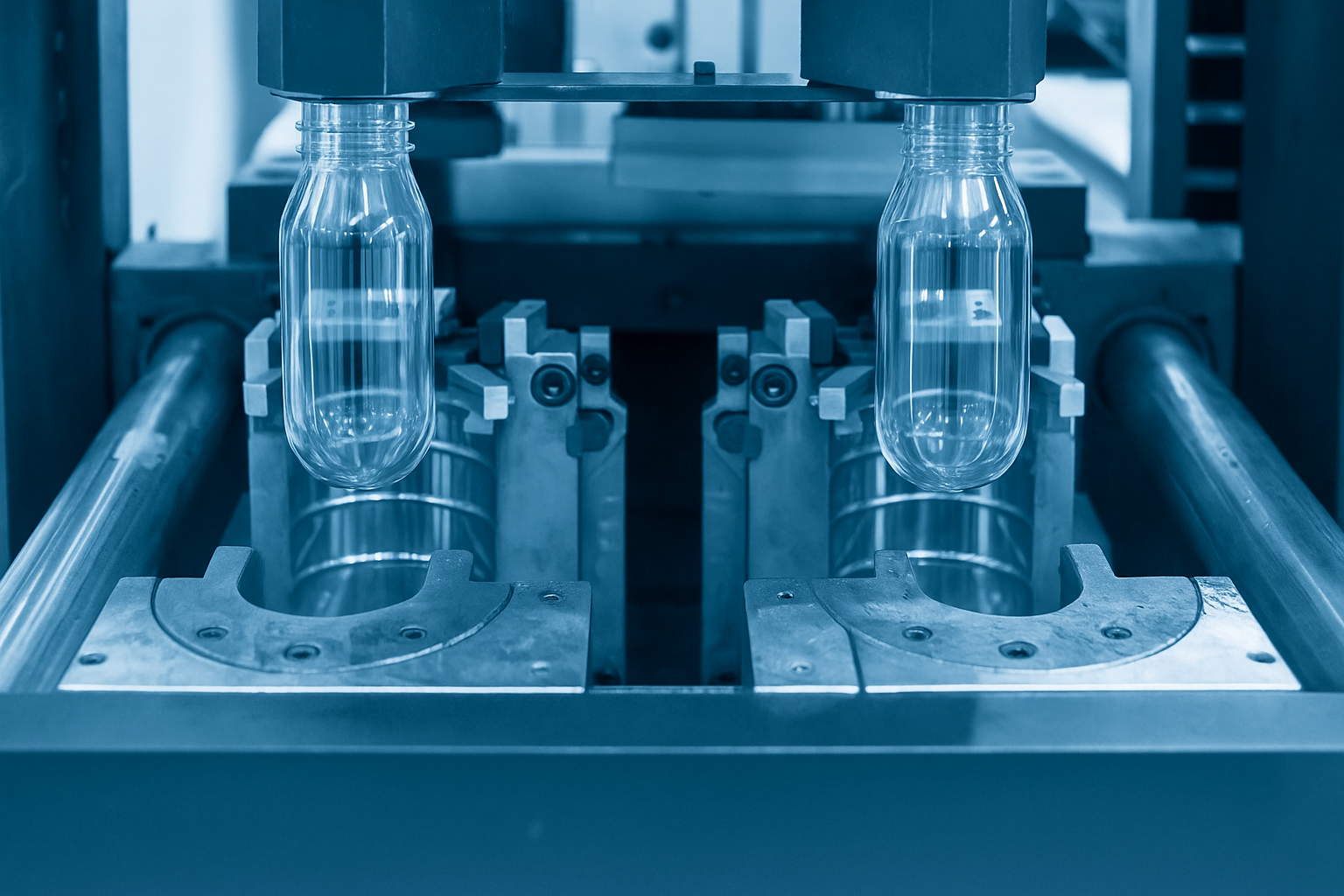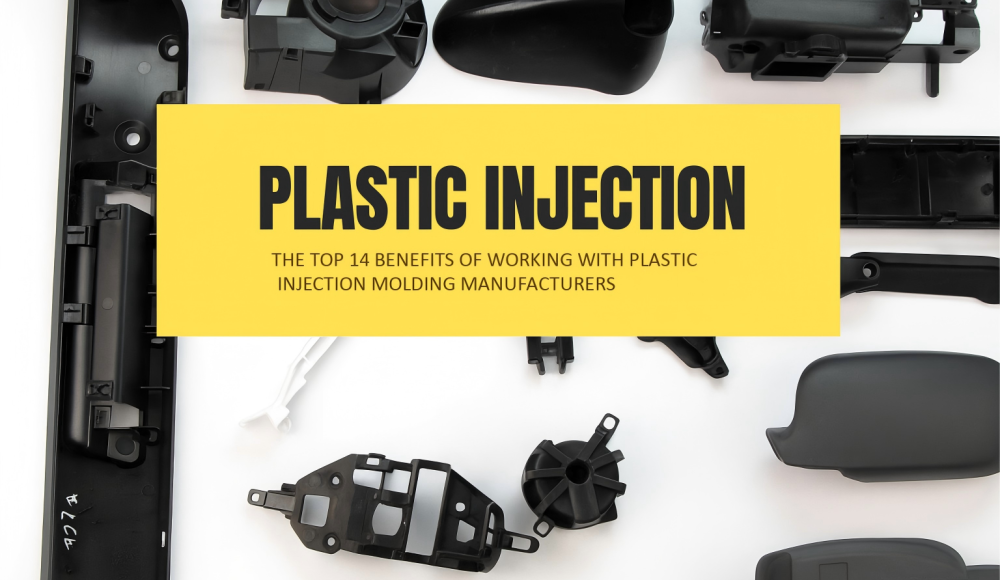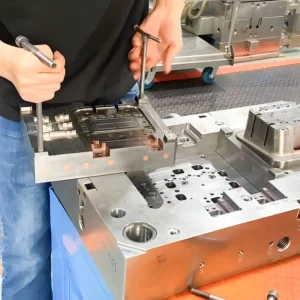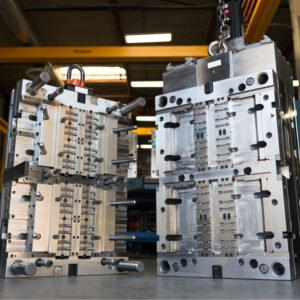Moldura de inyección de plástico has long been one of the most versatile and cost-effective manufacturing processes for producing precision parts. From automotive components and medical devices to electronics and consumer goods, this process enables Original Equipment Manufacturers (OEMS) to produce high-quality, complex plastic parts consistently and efficiently.
Its ability to deliver tight tolerances, repetibilidad, and scalability makes injection molding a top choice across industries. Sin embargo, the benefits go far beyond basic productivity or cost. Abajo, we explore the arriba 14 advantages of injection molding that make it the cornerstone of modern plastic manufacturing.
1. Ability to Produce Detailed and Complex Geometries
Injection molding allows manufacturers to create partes altamente complejas with intricate geometries that would be difficult or impossible to achieve using other manufacturing methods.
Mediante el uso scientific molding principles, engineers can collect and analyze process data — such as temperature, presión, and flow rate — to fine-tune every stage of the cycle. This data-driven control ensures the part’s dimensional accuracy and repeatability, even across thousands or millions of production cycles.
Such precision is critical in industries like medical technology, electrónica, and consumer devices, where fine details, paredes delgadas, and exact fits are essential for performance.
2. Eficiencia
Efficiency is one of the strongest arguments for using injection molding. Once a mold is built and optimized, the production process becomes highly automated and rapid, minimizing cycle times and maximizing throughput.
Experienced molders use Diseño para la fabricación (DFM) principles early in development to reduce design flaws and eliminate unnecessary steps. Además, incorporación value-added services—like in-mold labeling, ultrasonic welding, and assembly—further streamlines operations, cutting time and cost from the overall production process.
3. Strength and Versatility
Modern plastics have advanced far beyond their original reputation as lightweight alternatives to metals. Today’s high-performance thermoplastics can deliver exceptional strength, rigidez, and chemical resistance while remaining lightweight.
Manufacturers can choose from encima 25,000 engineered resins, allowing customization of material properties such as tensile strength, resistencia al impacto, and temperature tolerance. For structural or load-bearing parts, reinforced polymers (with glass fibers or carbon fibers) offer mechanical properties comparable to aluminum — at a fraction of the weight and cost.
4. Ability to Use Multiple Types of Plastic Simultaneously
Many advanced products require multiple materials or colors in one component. Multi-material injection molding y sobremoldeo make this possible, allowing engineers to bond soft and hard plastics, or combine functional and aesthetic materials in a single production step.
Sin embargo, material compatibility is crucial. A knowledgeable molder understands how to balance melt temperatures, adhesion properties, and shrinkage rates to prevent warping, delaminación, or weak bonding between materials. The result is a strong, durable, and visually appealing part with complex functionality.
5. Ahorro de costos
Injection molding offers significant cost advantages once the mold is made. El high initial tooling investment is quickly offset by the low per-part cost in large production runs.
Collaboration between OEMs and molders during the design phase helps avoid costly tooling modifications later. Applying DfM principles early ensures moldability, reduces scrap rates, and prevents production delays. Además, part consolidation—combining multiple pieces into a single molded component—reduces assembly costs and improves overall product reliability.
6. Precisión
Injection molding delivers outstanding precisión dimensional y tolerancias apretadas, typically within ±0.001 inch. This precision is vital in applications like medical instruments, componentes aeroespaciales, and microelectronics.
With the help of advanced molding machines, sensores, and process monitoring software, these tolerances are consistently repeatable across millions of cycles. The result is exceptional reliability and uniformity in every part produced.
7. Shortened Product Development Time
Partnering with an experienced injection molder can drastically shorten the product development cycle. Using simulation tools such as Moldflow analysis, engineers can identify potential defects—like sink marks, alabeo, or air traps—before physical prototyping.
This proactive approach accelerates the time from concept to production, allowing OEMs to bring products to market faster while maintaining quality and reducing the need for multiple design revisions.
8. Multiple Finishes
Injection molding offers a range of surface finish options straight out of the mold. Depending on the tooling texture and material type, parts can feature glossy, mate, satin, or textured surfaces without requiring secondary finishing operations.
More advanced finishes — such as grabado, leather-like textures, or fine-grain patterns — can be added directly to the mold surface, achieving aesthetic appeal and tactile variety while maintaining high efficiency.
9. High-Output Production and Consistency
Injection molding is built for producción de alto volumen. Once a mold is set up, every cycle produces identical parts with minimal variation, thanks to the stability of the process and automation.
Continuous improvement techniques and real-time monitoring ensure consistent part quality, while robotic automation enables 24/7 production with minimal supervision. This makes injection molding ideal for industries demanding large-scale, repeatable manufacturing.
10. Color Control
Color customization is another major advantage. OEMs can choose from transparente, opaque, or custom-colored resins, achieving precise brand colors or functional indicators.
Through the use of color masterbatches o pre-colored compounds, injection molders maintain consistent coloration across batches. Multi-shot molding also allows multiple colors to be integrated into one component, expanding design flexibility.
11. Flexibilidad
Injection molding offers exceptional design freedom and material flexibility. Engineers can modify part geometry, espesor de la pared, or internal structures to meet functional needs without redesigning the entire system.
Compared to metal manufacturing, plastics can achieve complex shapes, subvenciones, and internal features without additional machining, making injection molding ideal for customized and innovative product designs.
12. Residuos reducidos
Injection molding is an inherently material-efficient process. Excess material from runners or sprues can often be re-ground and reused as regrind material, significantly reducing waste.
Many manufacturers are adopting prácticas sostenibles, such as using bio-based polymers and optimizing cycle times to minimize energy consumption. These green initiatives benefit both the environment and the manufacturer’s bottom line.
13. Bajos costos laborales
Automation is central to injection molding. Modern systems rely on robotic arms and computer-controlled machines that perform repetitive tasks with minimal human intervention.
This automation reduces labor requirements, minimizes the risk of defects caused by human error, and allows operators to focus on quality monitoring rather than manual production. The outcome is higher efficiency at lower cost.
14. Lightweighting
“Lightweighting” refers to the replacement of metal components with de alta fuerza, lightweight thermoplastics. This trend is particularly strong in the automotive, aeroespacial, y las industrias electrónicas.
By using polymers like poliamida (nylon), OJEADA, or carbon fiber-reinforced composites, manufacturers can significantly reduce product weight while maintaining structural integrity. The benefits include improved fuel efficiency, lower emissions, and enhanced design freedom.
Why Working With an Experienced Injection Molder Matters

Why Working With an Experienced Injection Molder Matters
While injection molding offers countless advantages, realizing its full potential depends on the expertise of the molding partner. An experienced injection molder ensures optimal material selection, precise tool design, and a stable, repeatable production process.
When evaluating a potential molder, Considere lo siguiente:
Tienen in-house engineering and tooling capabilities?
Are they skilled in scientific molding, sobremoldeo, and multi-shot techniques?
Do they maintain rigorous QA/QC procedures and testing standards?
Do they understand the requirements of your specific industry?
Choosing the right partner can directly influence part quality, rentabilidad, and time-to-market.
Conclusión
Injection molding remains one of the most reliable and scalable manufacturing processes in modern industry. Its ability to produce complex, durable, and precise components — efficiently and at scale — gives OEMs an undeniable competitive edge.
From cost savings and material flexibility to sustainability and lightweighting, the benefits of injection molding continue to evolve alongside material science and automation technologies.
To maximize these advantages, partner with a trusted injection molding expert who can turn your design vision into a high-performance reality.
Leer más:
Cómo diseñar nervaduras para piezas de plástico: Guía de diseño de moldeo por inyección
Todo sobre los conceptos básicos del moldeo por inyección de plástico
Guía de selección de materiales de moldeo por inyección
Tipos de moldes de inyección: Categorías, Características, y aplicaciones industriales



